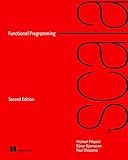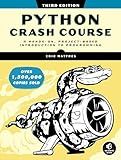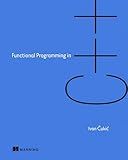Best Functional Programming Books to Buy in January 2026

Functional Programming in Scala, Second Edition



The Art of Functional Programming



Python Crash Course, 3rd Edition: A Hands-On, Project-Based Introduction to Programming



Functional Programming in C++: How to improve your C++ programs using functional techniques



Fanuc CNC Custom Macros (Volume 1)



Functional Programming in Scala


To iterate a matrix in Haskell, you can achieve it using recursion or list comprehensions. Below is an example of how to iterate through each element in a matrix using recursion:
iterateMatrix :: [[a]] -> [a] iterateMatrix [] = [] iterateMatrix (row:rest) = row ++ iterateMatrix rest
In this code, iterateMatrix takes a matrix represented as a list of lists ([[a]]) and returns a flat list [a] by concatenating each row. The base case is when the matrix is empty, in which case an empty list is returned. For each non-empty row, it concatenates it with the result of recursively calling iterateMatrix on the rest of the matrix.
Alternatively, you can use list comprehensions to achieve matrix iteration. Here's an example using list comprehensions:
iterateMatrix :: [[a]] -> [a] iterateMatrix matrix = [element | row <- matrix, element <- row]
Here, the list comprehension [element | row <- matrix, element <- row] iterates over every element element in each row row of the matrix and creates a resulting list.
Both approaches provide a way to iterate through elements of a matrix in Haskell.
What is matrix inversion in Haskell?
Matrix inversion in Haskell is the process of calculating the inverse of a given matrix. A matrix inverse is similar to a reciprocal for numbers – it is a matrix that, when multiplied by the original matrix, yields the identity matrix.
In Haskell, you can use various libraries and approaches to implement matrix inversion. For example, the 'hmatrix' library provides functionality for matrix operations, including matrix inversion. Here's an example of how you can calculate the inverse of a matrix using this library:
import Numeric.LinearAlgebra
main :: IO () main = do let matrix = (2><2) [1, -1, -2, 3] -- Input matrix let inverse = inv matrix -- Calculate the inverse print inverse
In this example, we create a 2x2 matrix called matrix. Then, we use the inv function from the Numeric.LinearAlgebra module to calculate its inverse and store it in the inverse variable. Finally, we print the inverse matrix.
Note that not all matrices have an inverse. The matrix must be square (i.e., have the same number of rows and columns) and have a non-zero determinant for its inverse to exist.
How to initialize a matrix with specific values in Haskell?
To initialize a matrix with specific values in Haskell, you can use the [replicate](https://ubuntuask.com/blog/how-to-replicate-numpy-choose-in-tensorflow) and replicateM functions from the Control.Monad module.
Here's an example of how you can initialize a 3x3 matrix with the value 0:
import Control.Monad
matrix :: Int -> Int -> a -> [[a]] matrix rows cols val = replicate rows (replicate cols val)
main :: IO () main = do let m = matrix 3 3 0 print m
This will output:
[[0,0,0],[0,0,0],[0,0,0]]
In the matrix function, replicate rows creates a list of length rows, and replicate cols val creates a list of length cols, each element containing the value val. Thus, replicate rows (replicate cols val) creates a matrix with rows number of rows, each having cols number of columns, and all elements initialized to val.
You can modify the val parameter to initialize the matrix with different values.
What is matrix transposition operation in Haskell?
In Haskell, matrix transposition is the operation that converts the rows of a matrix into columns and vice versa. It can be implemented using nested list comprehension. Here's an example implementation:
transpose :: [[a]] -> [[a]] transpose ([]:_) = [] transpose x = (map head x) : transpose (map tail x)
This implementation handles both empty and non-empty matrices. It uses pattern matching to check if the first row is empty and returns an empty list in that case. Otherwise, it extracts the heads of each row using map head to create a new column and recursively calls transpose on the tails of the rows. The process continues until all columns have been constructed, resulting in the transposed matrix.
How to calculate the trace of a matrix in Haskell?
To calculate the trace of a matrix in Haskell, you can define a recursive function that sums the diagonal elements of the matrix. Here's an example implementation:
trace :: Num a => [[a]] -> a trace [] = 0 trace (row:rows) = head row + trace (map tail rows)
Explanation:
- The trace function takes a list of lists as input, representing the matrix, and returns a single value.
- The base case occurs when the matrix is empty, so the trace is 0.
- In the recursive case, the trace is calculated by summing the first element of the first row with the trace of the remaining rows (excluding the first element of each row).
- The head function returns the first element of a list, while the tail function returns the list excluding the first element.
- The map function applies a function to each element of a list.
Example usage:
matrix1 = [[1, 2, 3], [4, 5, 6], [7, 8, 9]] -- matrix1 = 1 2 3 -- 4 5 6 -- 7 8 9 -- trace(matrix1) = 1 + 5 + 9 = 15
To use this function, you can simply call trace with a matrix as the argument.
